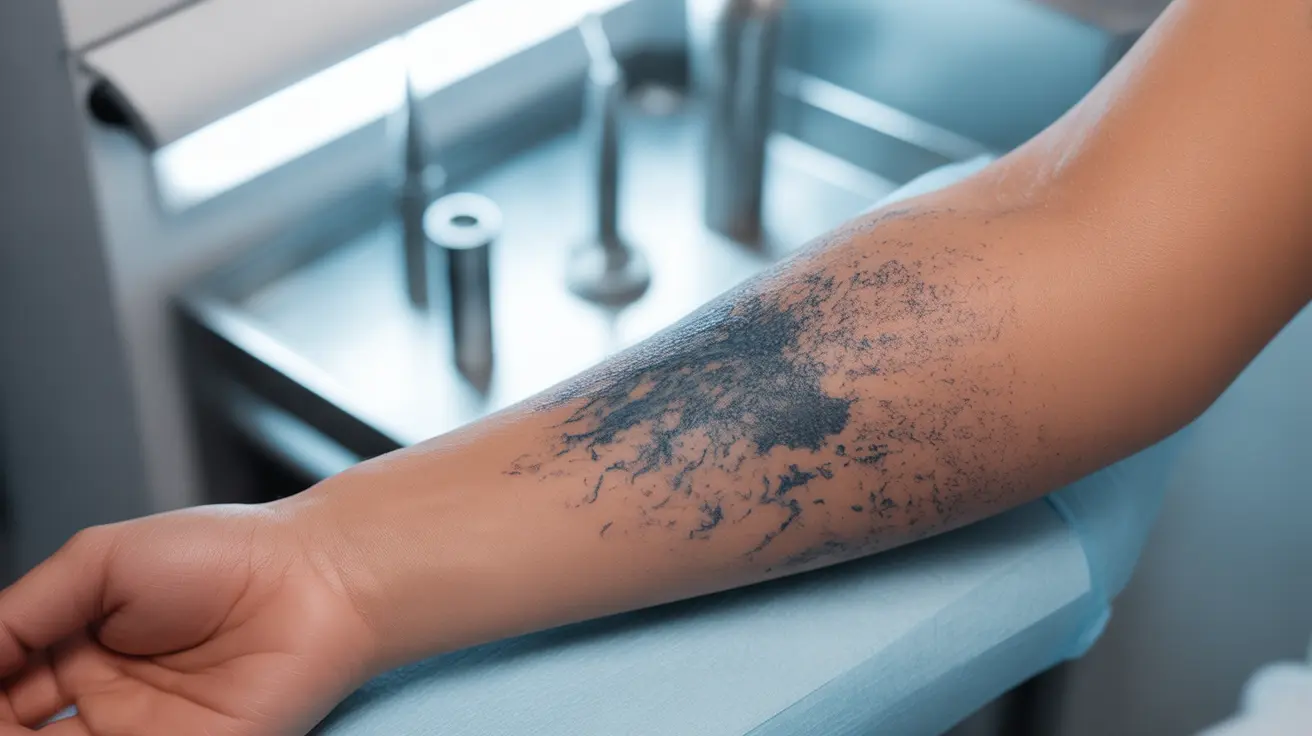Considering tattoo removal? You're not alone. Whether your tattoo no longer reflects who you are or you're seeking a fresh start, understanding the tattoo removal process is crucial for making an informed decision. Modern tattoo removal techniques have evolved significantly, offering more effective and safer options than ever before.
In this comprehensive guide, we'll explore everything you need to know about tattoo removal, from how it works to what you can expect during recovery. We'll also examine the effectiveness of different removal methods and help you understand the factors that influence successful tattoo removal.
How Laser Tattoo Removal Works
Laser tattoo removal is currently the most effective and scientifically proven method for removing unwanted tattoos. This technique uses specialized lasers that target the ink particles beneath your skin without damaging the surrounding tissue. The laser breaks down these particles into tiny fragments, which your body's immune system then naturally eliminates over time.
During the procedure, the laser delivers quick pulses of high-intensity light that penetrate the skin's surface. Different wavelengths are used to target various ink colors, as each color responds differently to specific light frequencies. Black and dark blue inks typically respond best to treatment, while lighter colors may require additional sessions.
The Treatment Process
Initial Consultation
Before beginning tattoo removal, you'll need a consultation with a qualified professional who will evaluate your tattoo and skin type. They'll assess factors such as:
- Tattoo size, color, and location
- Ink density and layering
- Your skin tone
- Any existing skin conditions
- Previous tattoo treatments
Number of Sessions Required
Complete tattoo removal typically requires multiple sessions, usually spaced 6-8 weeks apart. Most people need 6-12 treatments, though this can vary significantly based on various factors. Your practitioner will develop a customized treatment plan based on your specific situation.
Professional vs. At-Home Removal Methods
While professional laser treatment is the gold standard for tattoo removal, some people consider at-home alternatives. However, it's crucial to understand the significant differences in safety and effectiveness between professional and DIY approaches.
Professional Methods
- Laser removal (most effective)
- Surgical excision (for small tattoos)
- Dermabrasion (less common)
At-Home Options
Over-the-counter creams and DIY removal kits often promise quick results but can be ineffective and potentially dangerous. Many contain harsh chemicals that may cause skin damage, scarring, or chemical burns. Medical professionals strongly advise against using these unregulated products.
Recovery and Aftercare
Proper aftercare is essential for optimal results and minimal complications. After each treatment session, you can expect:
- Temporary redness and swelling
- Possible blistering or scabbing
- Gradual fading over several weeks
Your practitioner will provide specific aftercare instructions, which typically include:
- Keeping the area clean and dry
- Applying recommended ointments
- Avoiding sun exposure
- Wearing loose clothing over the treated area
- Avoiding swimming and excessive sweating
Frequently Asked Questions
How does laser tattoo removal work and how many sessions are needed to remove a tattoo?
Laser tattoo removal works by using focused light beams to break down ink particles into smaller fragments, which your body then naturally eliminates. Most people require 6-12 sessions for complete removal, though this varies based on factors like tattoo size, color, and age.
What are the common side effects and risks of professional tattoo removal methods like laser treatment?
Common side effects include temporary redness, swelling, and blistering. More serious but rare risks can include scarring, skin texture changes, and hyperpigmentation. Working with a qualified professional significantly reduces these risks.
Are at-home tattoo removal creams or kits safe and effective for removing tattoos?
At-home tattoo removal products are generally ineffective and potentially dangerous. These products can cause skin damage, scarring, and chemical burns. Medical professionals recommend avoiding these unregulated alternatives.
What should I expect during recovery and aftercare following laser tattoo removal?
During recovery, expect some redness, swelling, and possible blistering. Follow your provider's aftercare instructions carefully, including keeping the area clean, applying recommended ointments, and avoiding sun exposure.
What factors affect the success and duration of tattoo removal treatments?
Success factors include tattoo age, ink colors and quality, tattoo location, skin tone, immune system health, and smoking status. Professional application and depth of the original tattoo also play significant roles in removal success.




